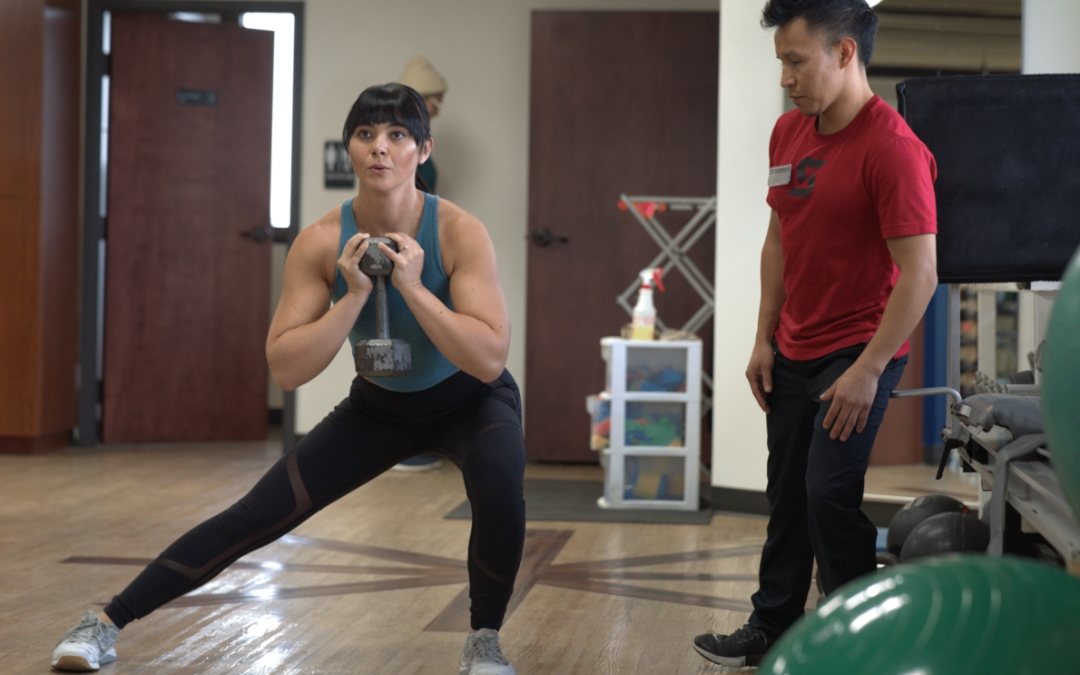By: Cassidy Hammons, PT, DPT, Ankita Kelkar, PT, DPT, Juan Renoj Juanta, PTA
Whether you are new to working out or if you are an expert, group fitness classes that utilize High Intensity Interval Training (HIIT) and circuit training area a great way to gain cardiovascular and muscle strength while also finding a community to keep you accountable for your goals.
HIIT Benefits
A major benefit of HIIT is cardiovascular strength. HIIT is all about your heart rate- getting it to 80%-90% of your maximal heart rate during the exercise and returning to 40-55% of your maximal heart rate for the rest period1. These are estimated for each individual, and exercise and recovery times can vary depending on the style of class or program you are following.
Besides being great for cardiovascular strengthening, HIIT programs also improve overall muscle endurance and stamina. This is crucial for high level athletes or individuals with physically demanding jobs.
Alongside the health benefits, HIIT provides a great workout in a short amount of time. Strength and cardio gains that are typically gained during long workouts can be gained in 20–60-minute sections throughout the week.
Circuit Training
Group fitness classes often utilize circuit training to maximize the workout. It pushes all of the physiological systems- cardiovascular, muscular, skeletal, etc.- at once. Combining resistance with cardio training- often with HIIT mixed in- can help you perform your best in a shorter amount of time.
Often, HIIT and circuit training studios diversify their workouts throughout the week. This allows you to exercise every day, but, even though the programs are written to avoid overtraining, overuse injuries can still occur.
What’s an overuse injury?
An overuse injury typically starts when you do a repetitive motion over a long period of time. This creates microtrauma and reduces your soft tissue’s- such as a tendon, ligament, or muscle- ability to heal itself2.
While we exercise, there are muscle groups that we target to strengthen, but there are surrounding muscles that support and stabilize the movement. If we forget to train those muscles to engage, strains, impingements, or tears can occur.
You can still train with an overuse injury, however, it depends on your pain level. As a general rule, if your pain is a 4 on a scale of 10, you should avoid exercises that exacerbate it. If it is a 3 or below, reduce your workout volume- repetitions, weight, or range of motion- to a tolerable level. Tolerable pain, like dull aches, proceed your workouts with caution.
Physical Therapy Can Help YOU
Physical therapy can help you understand your overuse injury and help you reduce the risk of future overuse injuries. Spooner therapists can provide a head-to-toe body assessment to help you understand underlying strengths and weaknesses that are helping or hurting you in the gym. We can help you learn to engage your supporting muscles so you can perform your best and reduce your risk of injuries.
Spooner therapists are on your team to help you get back to the gym and doing the activities you love without pain! Schedule an appointment today.
References:
- High-Intensity Interval Training. ACSM. 2014. https://www.acsm.org/docs/default-source/files-for-resource-library/high-intensity-interval-training.pdf
- Pain: Ability Traffic Light- A Guide to Movement Safe Pain. Shirley Ryan Abilitylab. 2016. https://www.sralab.org/sites/default/files/2017-04/Pain%20Activity%20Traffic%20Light%202017.pdf

